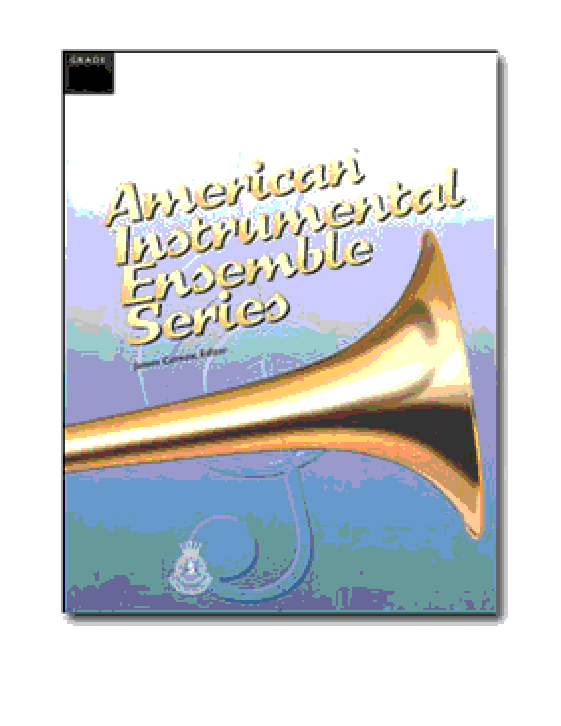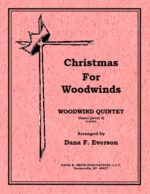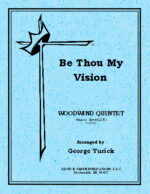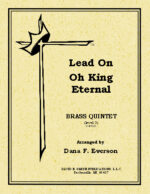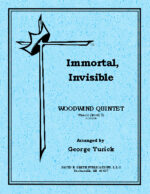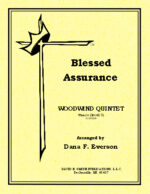| Instrument | |
|---|---|
| Level | 2 |
| Occasion | |
| Theme | God Of Abraham Praise, The |
| Writer | |
| Publisher | |
| Copyright | 2007 |
God Of Abraham Praise, The
$24.95
Related products
-
Only A Sinner
$10.00A woodwind quartet for Flute, oboe, and two clarinets with optional parts for flute and alto sax. Plus a set of fifth parts for bassoon or bass clarinet can allow for the piece being a quintet. The first statement is in the clarinets where it leads into a full ensemble passing the lines amongst the parts. A delightful little segue leads to a modulation where the tune is in the lower lines alternated with flourishes in the flutes. This Alternating texture carries on for some time. Then the tempo picks up for a vibrant exclamation where the theme is once again bantered about where it makes one final boast and concludes.
-
-
Brighten The Corner Where You Are
$12.00A standard brass quintet with optional trumpet for horn. As one might expect the piece is cheerful from beginning to end. After a bright intro, the trumpet carry the tune until handed over to the middle voices with flourishes in the trumpets. After a transition that leads upward to an exciting climax. The piece abruptly shits to a quiet and expressive section lead by the trombone on the theme where it all builds to another zenith and once again abruptly goes quiet. A modulation and meter shift and the piece becomes countrapuntally gentle.. A meter shift back to the beginning and an exuberant building to a joyous conclusion.
-
Christmas for WW
$9.00(std+ opt)(opt quartet) Joy To The World; God Rest Ye Merry Gentlmn; Angels We Have Heard On High; O Little Town Of Bethlehem
-
-
Lead On O King Eternal
$10.00A traditional brass quintet with opt. trumpet for horn and extra baritone for use as a sextet. The introduction uses extraneous material where it leads in the first theme by the trombone until the theme is passed around in fragments until the them is taken over by the trumpets, and the trombones. A modulation takes place where the theme is in the trombones with flourishes in the trumpets. The trumpets now take the theme with flourishes in the middle voices until the piece ends with a declamatory statement.
-
-
Blessed Assurance
$9.00This woodwind quintet (with opt. parts) is constantly on the move. While the melodic material is always made aware, the accompanying parts are full of movement. Even with metrical changes there is a constant flow giving a sense confidence and resolve. It bubbles from beginning to end and finally makes a solid statement of assurance.

